Performance Practice
of Electroacoustic Music
Peter Ablinger
Instrumente und ElektroAkustisch Ortsbezogene Verdichtung (“Das Blaue vom Himmel”)
Peter Ablinger
Instrumente und ElektroAkustisch Ortsbezogene Verdichtung
(“Das Blaue vom Himmel”) for violoncello and live electronics (1995-97)
Until 1994, Peter Ablinger’s compositional output had been focused on instrumental and vocal compositions. One of the basic concepts in these works had been a compositional trajectory leading towards reduction. Another trajectory led in the opposite direction; towards increasing density and noise. (Ablinger 2016, p. 369) Central to Ablinger’s musical thought, the category of “noise” (“Rauschen”), which the composer contrasts with “noises” (“Geräusche”), is characterised in an exchange with composer Trend Olav Reinholdtsen as mediating a sense of self-awareness:
“Sounds as expansions to the musical material do not interest me in the slightest. Noise is different to other sounds. To me it is almost the opposite. Noise is certainly one of the oldest sounds of which humans have become aware. A waterfall, the sea or a forest rushing [sic] can involve an experience comparable to the sight of a mountain range, the desert or the stars at night. Such experiences are as far as possible devoid of meaningful information [sic] yet they act like a mirror, they throw something back upon ourselves insofar as we read something into them, turn them into something which is anchored only in ourselves. Hence, in such situations we experience ourselves.” (Ablinger 2008, pp. 94)
Ablinger goes on to describe perception as an act of reconstruction and points out the possibility to work with illusions, blurring the distinction between actual sounds and inner perception:
“Noise has the tendency to trigger auditory illusions in us. Illusions I take not in the sense of trompe l’oeil which prescribes what we are to hallucinate but as projections actually generated by ourselves individually. I often work with the possibility of such illusions, design my sounds in such a way that illusions are promoted or I play with them so that it is not entirely clear whether sounds are actually really in space or just inside our heads.
The combination of noise and instruments is also about the concealing function of noise. When we are even close to a fountain and listen to other people talk we may notice that the consonants of language can hardly be heard any more because they are enveloped by the noise and only the vowels remain from which we reconstruct what has been spoken. These are moments in which we may become aware how our perception works, namely that it continuously reconstructs and does not simply record what is happening ‘out there’.
This act of perception as the continuous construal of our own world is what preoccupies me. Therefore it may be that I envelop some other sound by means of the noise in order for me to have to concentrate even harder to be able to uncover what has been concealed. This state of heightened concentration as such – if I am prepared to follow it – is quite something!” (Ablinger 2008, p. 95)
Equally important is the concept of verticalisation (Verdichtung), relating to Ablinger’s view that human thinking and auditory perception are fundamentally different in that the first organises itself along the time axis as a linear sequence while the latter is seen as a perceptive mode best capable of grasping simultaneous events, a “spherical” mode in which time is merely an illusion. (Ablinger 2016, p. 370) According to Ablinger, linear thinking and the application of linguistic concepts on music has had a profound impact on much of European art music, as exemplified e.g. by the development of sonata form after 1800. Ablinger contrasts this with a “more direct form of listening and experiencing”, which he seeks to achieve through verticalisation (for which he also sees precedent for example in the variation movements of Beethoven’s Piano Sonatas op. 26 and op. 111, and later in composers such as Iannis Xenakis, Alois Hába, György Ligeti and Conlon Nancarrow). (Ablinger 2016, p. 371)
Ablinger’s ongoing exploration of these categories led him to experiment over the course of a year at the studios of TU in Berlin, IEM in Graz and the Experimentalstudio der Heinrich-Strobel-Stiftung des Südwestfunks in Freiburg, the process leading to a number of pieces with electronics composed between 1995 and 2001; Läuterung des Eisens for saxophone, piano and percussion (1995), Portraits for two violins (1995-1996), Das Blaue vom Himmel for violoncello (1995-1997), For Johann Michael Fischer for two trombones and two violoncellos (1995-1997) and Homage to the square (1995-1999). Ablinger named this series “IEAOV”, the acronym standing for “Instruments and Electro-Acoustic Site-specific Verticalisation” (Instrumente und ElektroAkustisch Ortsbezogene Verdichtung [sic] (Ablinger 2016, p. 369; English translation of “IEOAV” from Ablinger 2007.)
In these pieces, verticalisation for Ablinger implies in general terms the modification of sequential events into spectral simultaneity: what has been recorded as a sound sequence (Klang-Folge) returns as timbre (Klang-Farbe), the temporal development thus having become indistinguishable from the spectral: “Zeit selbst ist mit Farbe identisch geworden” (time itself has become identical with timbre). (Ablinger 2016, p. 370) In the process other parameters than time and frequency become ambiguous as well, as the proportions of a spectrum can be modulated through dynamics as well as through duration. As Ablinger points out, the exchangeability then also applies to some extent to instruments, as some instruments can reproduce the spectral verticalisation of another. To Ablinger, the possibility to suspend parameters points to their fictionality: “[…] while we have neatly separated sounds into frequency, duration and amplitude, there is no sound without duration, no sound without amplitude. (Ablinger 2016, p. 371)
Das Blaue vom Himmel was written for cellist Michael Moser and premiered at the Musikprotokoll des Steirischen Herbst in Graz in 1997. The electronics were realised by Winfried Ritsch and Thomas Musil of IEM Graz, the performance version prepared by Wolfgang Musil. Ablinger remarks that the notated cello part “could almost be the transcription of one of [Michael Moser’s] improvisation techniques.” (Ablinger 2007; score, p. 2)
Fundamentally, the verticalisation (Verdichtung) in this piece is achieved through the live electronics system. In the Prolog (prologue), the cellist plays three short musical sequences. They are recorded with two microphones, one placed in front of the cello (Prolog 1 and Prolog 2) and one inside the cello (Prolog 3) and fed into a system of delay lines. A maximum of eleven delay lines with different lengths are grouped in a bank, their sum being fed back to the input. The variable activation of additional delay banks allows up to 14,641 superposed lines. Their number and lengths determine the specific granularity (“Körnigkeit”) of the sounding texture, “von grobkörnig/pulsierend bis strukturlos/glatt” (“from coarse/pulsing to non-structured/smooth”) (Ablinger 2016, p. 370), the amount of feedback defines its duration. The result depends also on the dynamics, intonation, length and current timbre of the violoncello sequences and on the specific acoustic response of the hall captured by the first microphone. The last aspect accounts for the site-specific character of the piece as postulated by Ablinger.
In the main section (Hauptteil) these three sound layers and a recording taken at the Jakominiplatz in Graz are diffused through a specifically disposed speaker system according to a timetable. They build a dense and slightly transforming sound wall. The cello part, which besides long glissando sequences includes remarkably virtuosic passages and is performed without amplification, constitutes an additional layer and should be almost completely masked by the electronics. The expected relation between cello and electronics thus gets subverted. The performer vanishes in the sonic environment, the audience can only guess where the cello is. (Ablinger, Talk, 36’45”) This constitutes the greatest challenge for both performers and for the audience, and is the key question raised by the piece: do we hear actual fragments of the violoncello sounding slightly above the masking threshold or is this the result of our imagination? The live electronic performer mediates between the violoncello player and the acoustic space and must try to navigate this almost utopic, highly subjective space-dependent threshold by strictly avoiding a continuous presence of the acoustic sound of the cello. The cellist performing an extremely differentiated and demanding part that the audience will not hear could possibly create a frustrating situation for both performer and audience, but might be compensated by the possibility of engagement in a listening situation that explores mechanisms of perception and offers a radical, sonically rich and immersive acoustic experience.
The richness of the sound is achieved through a meticulous composition of the four noise layers. They are labelled “äusseres Quadrat”, “äusserer Rhombus”, “inneres Quadrat” and “innerer Rhombus” (outer square, outer rhombus, inner square and inner rhombus), revealing the strong visual references that shaped the final concept. Prolog 3 is a soft noise sound produced with the bow on the side of the bridge. This generates the outer square, a soft fogy background lasting throughout the piece, except for a short interruption in the middle. Prolog 1 consists of four pitches above c5 and four pitches in the low register around G, all at intervals of 166 cents. The resulting verticalisation undergoes a very slow transposition of a major third during more than 12 minutes and constitutes the outer rhombus, the most predominant sound texture. It starts after 26 seconds, and the electroacoustic performer is requested to manually change its granularity within a scale between slight raw (243) and slight smooth (729) delay lines. The Prolog 2, a complex ascending sound texture over three strings combining bowing techniques (ordinario, tremolo and saltato alternating legno and crine) in the high register, generates the inner square. It is mirrored in the live cello part. The inner square starts with maximal smoothness (14,641 delay lines) at 4’29 and ends as a single line at 8’48, in a duo with the live cello. Finally, the recording from Jakominiplatz filtered by the inner square at its maximum density constitutes the inner rhombus, placed around the chronometric centre of the piece, from 5’27–7’27.
The title Das Blaue vom Himmel (The Blue from the Sky) alludes to Ablinger’s realisation that there can be no (flat) areas nor lines in music, theses being abstractions implied by the two-dimensionality of written music. Instead, there can only be “a more or less pronounced homogeneity as in a cloudless blue sky.” (Ablinger 2016, p. 372) The title however contains another subtext encoded in the German language: “das Blaue vom Himmel ist das, was gelogen ist, was einem jeder erzählen kann, das leicht Hergesagte” (“the blue from the sky is a lie, something that anyone can tell you, that is easily said”). (Ablinger, Talk, 1’30’00). This points to the question of sound experience as product of illusion, and to the productive impossibility to render visual categories, as for instance symmetry, in the musical domain.
Auctorial Instructions
Description of the different layers according to the score (s. Fig. I):
äuQu (äusses Quadrat): Verdichtung (verticalisation) of Prolog 3.
äuRho (äusser Rhombus): Verdichtung of Prolog 1. This layer is in continuous density variation and is gradually transposed from -200 cent to +200 cent.
InQu (inneres Quadrat): Verdichtung of Prolog 2. Start at 4:29 with maximal density (14,641) and end at 8:48 with no density (original recording).
InRho (innerer Rhombus): pre-recorded file of a walk through Jakominiplatz, Graz on 29 November 1996.
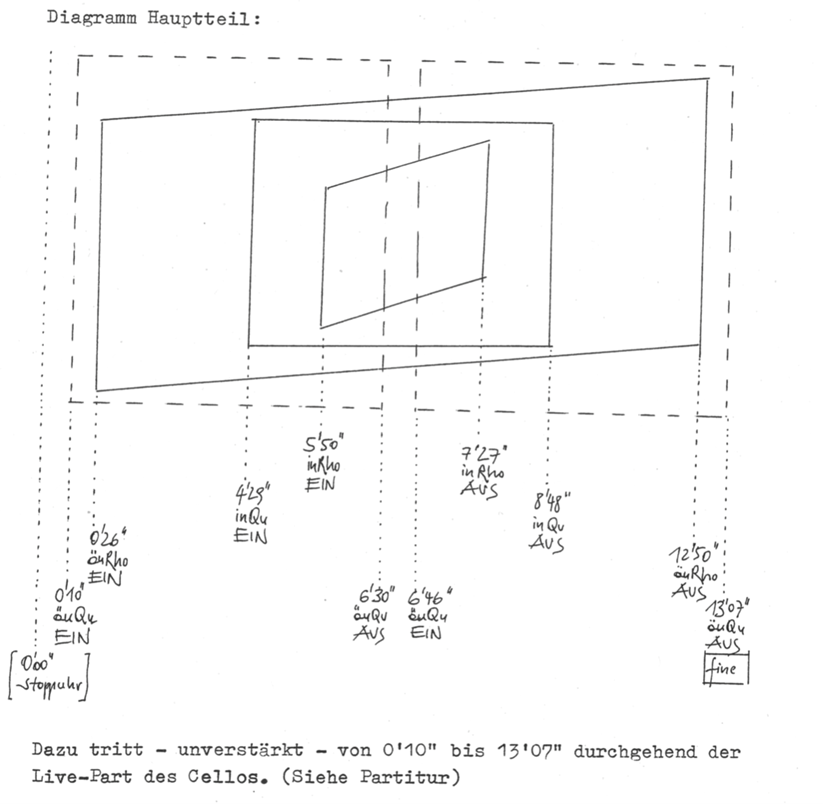
Fig. I. Diagramm Hauptteil. Score, p. 3.
Loudspeaker setup and routing
Two stage setups of the piece are notated in the score, a main setup and a variant. In both the cello is placed on centre stage.
The main setup description title is “Voraufführung 96” (pre-performance 96), so we can assume that this information was not updated and could differ from the one used at the premiere. It consists of four loudspeakers of the same kind in a quadrophonic setup. (s. Fig. II)
There is an instruction prescribing for the angle of the loudspeaker not to point directly to the audience. However, this was not strictly observed in practice. The sound layers should result in a loud and immersive sound. According to Wolfgang Musil, this depends on the diffusion situation. If the venue, for example, do not permit enough distance between audience and loudspeakers it is necessary to adjust the loudspeaker’s diffusion angle in order to avoid that at certain points the sound is perceived as coming from only one loudspeaker, and to aim for a perception of a global sound produced by all loudspeakers. (Musil, Interview, 30’00 (file 201208_002_Stereo.wav))
Each layer is routed and mixed differently onto the four speakers:
äuQu: all
äuRho: all, front 2/3, back 1/3
inQu: all, front 4/5, back 1/5
inRho: only front
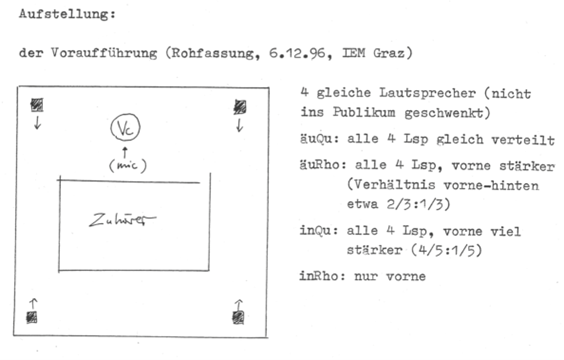
Fig. II. Pre-performance setup (four identical speakers). Score, p. 4.
The second setup “Variante für 4 ungleiche Lautsprecher” (variant for four different loudspeakers) assigns a different type of speaker to each layer. Three speakers are placed on stage, one behind the audience.
äuQu: diffused, pointed at the ceiling
äuRho: “maximal linear” range speaker (full range)
inQu: possibly more limited frequency range
inRho: lo-fi speaker
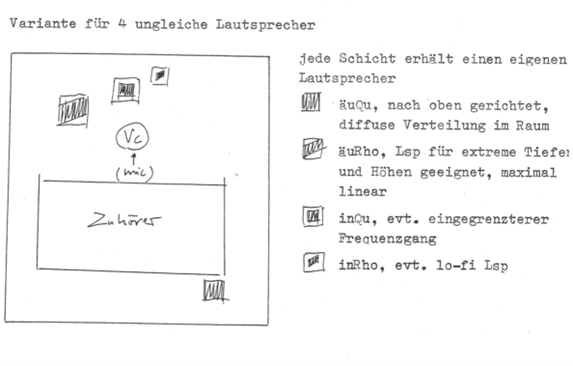
Fig. III. Setup for four different speakers. Score, p. 4.
The patch by Wolfgang Musil refers to the first setup with four identical loudspeakers, but with an additional speaker placed behind the cello player (centre stage) and used only for the pre-recorded file. Wolfgang Musil used this third variant in his performances. The patch allows the user to mix the signals directly in Max or externally using an audio console. It can be set to output the signal for the five speakers or the four layers separately. This enables the performer to realise all three setup versions.
| Score Name | Patch Name | Prolog |
| äuQu | CSteg | Prolog 3 |
| äuRho | HT [Hoch-Tief] | Prolog 1 |
| inQu | IMP [Improvisation] | Prolog 2 |
| inRho | SF | pre-recorded file |
Fig. IV. Table with the different layers.
The score also includes detailed information about how to manually perform the layer’s fade in and out. It also describes the intended balance between the layers, and between them and the live cello.
Performance report
The concert took place at ZHdK’s main concert hall (KS 3). Performers were Martina Schucan (cello), Carlos Hidalgo (sound projection) and Leandro Gianini (sound engineer). It was decided to perform the five-channel version and the Variante für 4 ungleiche Lautsprecher.
Setup
A microphone is placed on a stand in front of the cello. This microphone is used to record Prolog 1 and 2. A second microphone, placed inside the cello, is used to record the third Prolog. When this process is completed, the microphones are no longer used. No amplification of the live cello takes place during the piece.
Max Patch
We used a slightly modified version of Musil’s Max patch. (s. Sources).
The patch has two parts; one for the recordings and one for playback. On the GUI the order of the sound recording/treatment is done according to the recording order (Prolog). However, the midi faders follow the playback order, which might at first cause some confusion.
A tech-README is included in the user interface. The first tab describes the setup process, the second the operation during performance.
Operating the patch:
The performance is divided in the two cues “Prolog” and “Hauptteil”.
1. Prolog:
Pressing the key “q” starts the recording process of the first Prolog (HT). After 31 seconds the feedback process starts. It is important to precisely adhere to the time indications. Pressing the key “w” will start the recording of the second Prolog (37 sec, IMP) and the key “e” will start the recording of the third Prolog (3 sec, CS). Re-pressing the recording key will stop the recording. Pressing the key for the next Verdichtung will automatically stop the current one and start the next. The start of the first two recordings has to be precisely synchronised with the cellist. The third one is a three-second sample of a long cello tone that can be recorded when the cellist is already playing.
Two toggles indicate the status of the input and of the feedback for each Verdichtung.
A plugin slot is available to allow some transformation on the recorded sound. This should be set during the rehearsal process.
After the recording the patch operator presses the “enter” key to prepare the next cue (“Hauptteil”. The preparation includes a normalisation process on the three recordings in order for the relationship between fader position and effective volume to remain equal between performances. This process takes approximately 15 seconds. Now the system is ready to start the Hauptteil.
2. Hauptteil (main part):
The spacebar key will start theclock for “Hauptteil”. There is a ten-second count-in. Some parameters are automated, such as the start of transposition for the outer rhombus, the reduction of the density in the inner square and the start of the pre-recorded file.
The output section of the patch includes two routing presets. One will premix the layers and output the signals for the five-channel setup, the other will output the four layers individually. An output matrix allows the operator to customise the output levels.
A preset box allows the user to store new initial settings (output setup, midi fade assignment, etc. It is important to initialise the patch before making any changes and to then save the new preset in order to avoid storing unwanted data.
Recording microphones
For the microphone placed in front of the cello a Neumann TLM103 was used, as well as DPA 4060 inside the instrument.
Recording the sounds:
The recording process requires some planning. The shaping of the layers starts with the choice and the placement of the microphones. It is important to dedicate time to experimenting on this process for every venue. The room acoustics directly impact the sound of the layers «äuRho» (Prolog 1) and «InQu» (Prolog 2). For «äuQu» (Prolog 3) the interaction with the room is not relevant, since the microphone is placed inside the instrument. In our performance the external microphone was placed slightly to the left of the instrument (audience view) at approx. 1.5m distance from the instrument, at a height of 1m and pointing to the bridge. (The score prescribes a distance of at least 1.0 to 1.5m.) (s. Fig. V and VI) Wolfgang Musil emphasised that the resulting signal should also contain room information in order to create a link between the acoustical space and the transformation. As there is no live use of the amplification, microphone placement can be similar to a recording situation. However, with greater distance, there is a risk of getting more noise from the surroundings and the audience in the recording. In venues with long reverberation times a smaller distance as prescribed could prove necessary. (Musil, Interview, 29’30 (file 201208_001_Stereo.wav))
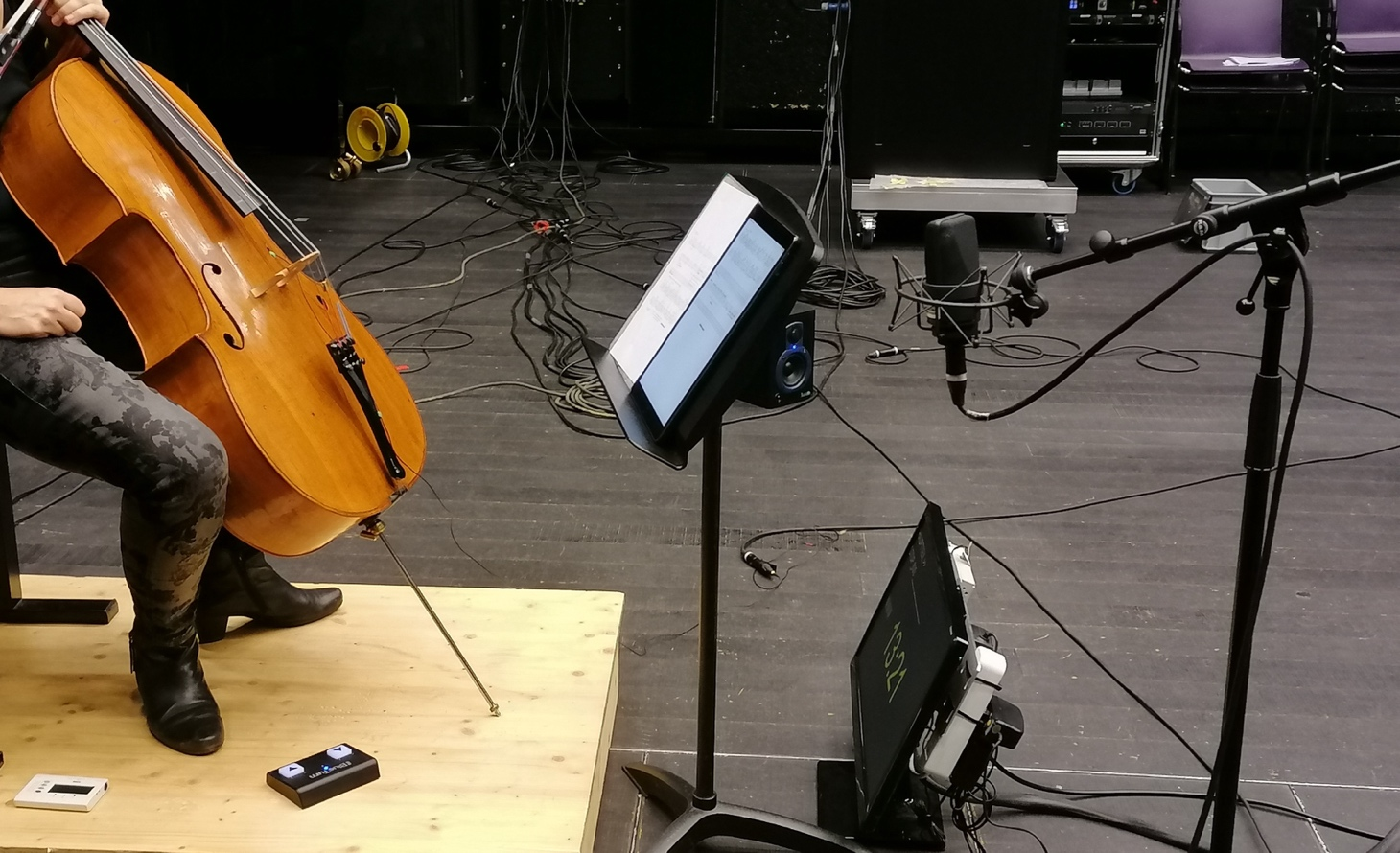
Fig. V. External microphone
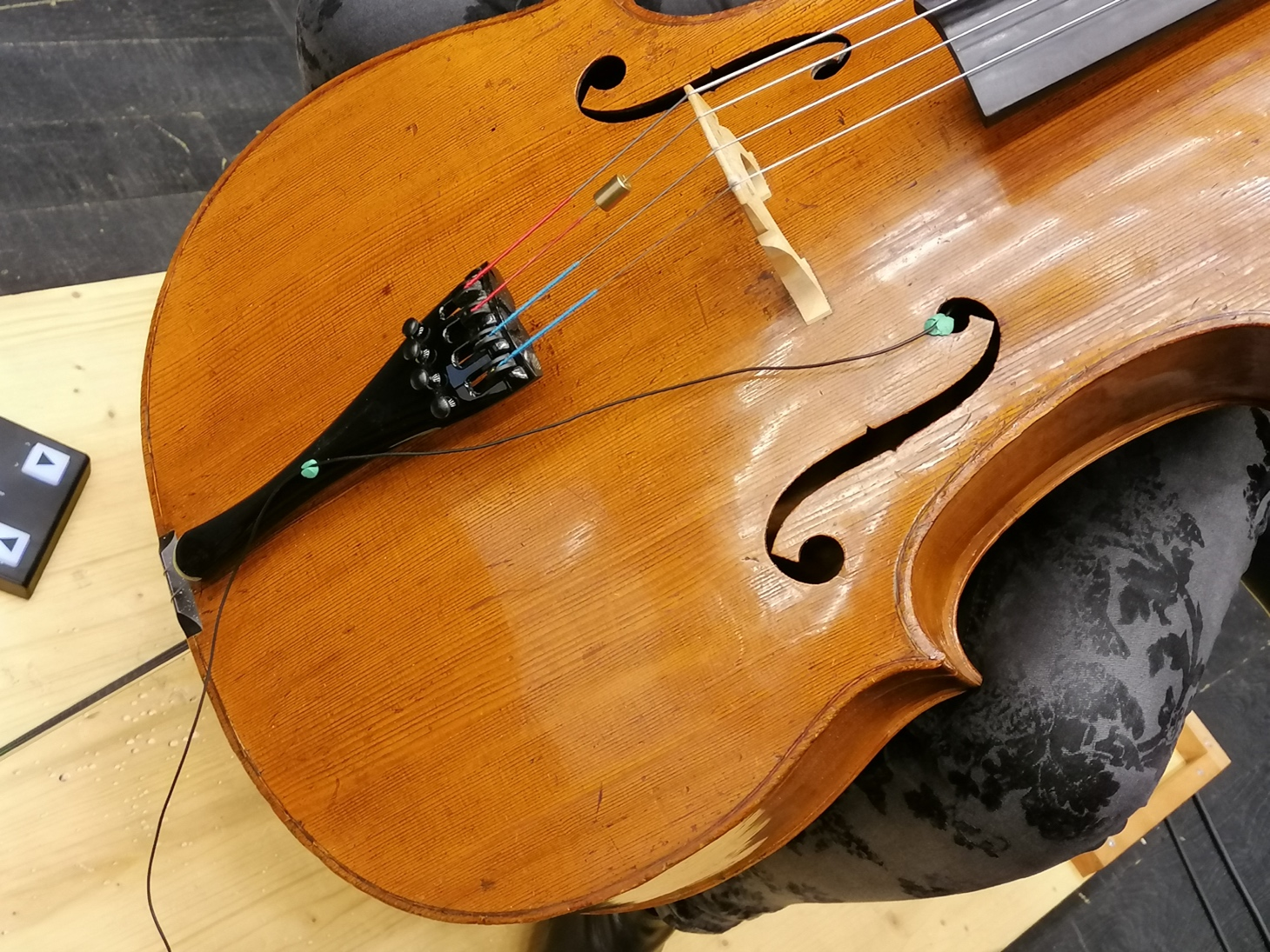
Fig. VI. Internal microphone
Sound treatment during soundcheck:
We recorded the prologues with different microphone positions. Prolog 1 is most critical, as the resulting layer can easily drown out certain frequencies. Attention should be paid to the way the prologues are played, since dynamics and the time taken by the player will affect the layer as well. Additionally, some equalisation was applied to the layers and the microphone inputs to avoid the drowning out of frequencies and to slightly sculpt the sounds and their interaction.
Live sound treatment
During the performance some interventions proved necessary. To control the sounds dynamically we used a dynamic EQ on the output of each layer (F6 from Waves). It was especially important for the treatment of the layer generated by Prolog 1 (HT).
Live sound projection
All the fade-ins and fade-outs are to be performed by the patch operator. The fade-in and fade-out characteristics are important as they will affect the overall formal perception. Fade-ins should be performed very quickly and with a short accent, making the entrance of a layer clearly perceivable.
Fade-outs should also be very fast. 10–30 seconds before the fade-out starts a little crescendo should be performed in order to increase the contrast. Considering the length of the section from 8:48 to 12:50 it is important not to start the crescendo too early.
The balance between electronics and unamplified cello should be pushed to the limit. The electronics should always be around the masking threshold but allowing fragments of the cello sound to emerge. The cello must not be heard continuously. The cello is subjected to the masking effect of the electronic layers. Their constant change in density and pitch contributes to the effect of highlighting or hiding it. The perceived loudness is an important aspect too, contributing to the piece’s dramaturgy. The perception of the layers’ loudness will vary over time. It might be necessary to slightly adjust the master fader level to compensate for this effect and to reach the right balance, matching the intensity of the cello playing.
Loudspeaker types
1. 4 gleiche Lautsprecher
We used five Kling & Freitag Gravis 15 in a quadrophonic + centre configuration. This configuration provides more power and creates a more immersive experience. The speakers are placed in front of the player. The experience of the audience is thus more even.
2. 4 ungleiche Lautsprecher
For the second configuration we used the following speakers:
1x Genelec: Full range
1x L Acoustics 108P with bandpass equalisation
1x L Acoustics 108P, full range pointed to the ceiling
1x Roland Guitar Amp: amp simulation
This setup results in a less immersive experience that will also differ according to the seating positions of the audience. It is not possible to achieve an even distribution of the sound to the audience. However, the piece will reveal more differences and sound more transparent. In this setting the experience proved to be more interesting for the cellist; she felt more integrated and could better follow the different layers.
Monitoring
No audio monitoring was used. The cellist was positioned close enough to the speakers to maintain orientation. There was an issue with the speakers on stage, especially in the second setting (4 ungleiche Lautsprecher): the speakers placed behind the cellist were too loud.
Synchronisation
The musician and the patch operator follow a clock for the different cues. Therefore, on-screen information for both was added to the patch.
Rehearsals
Since two electronic layers are constantly changing, it doesn’t make much sense to start in the middle of the piece or to repeat a certain section. This makes the rehearsal situation challenging. The Prolog is particularly demanding. The procedure should be rehearsed in advance in order to have as much time as possible in the concert space to work on the sound quality. All in all, the tunning of the system in the space and the sound direction are extremely demanding, since a timbral and dynamic relation between all five layers has to be achieved in order to generate a situation of auditory illusion and to allow the audience to perceive the overall form of the piece.
Further remarks
Due to technical limitations in previous versions of the electronics an internal process called “Vorverdichtung” (pre-condensation) was expected to be audible during the recording process of Prolog 1 and had to be faded out manually. The corresponding remarks in the score introduction in p. 5, Prolog 1 (“Vorverdichtung ist sofort hörbar” (pre-condensation is immediately perceived)), and in the cello part, page 8 “ca. 33″/Vorverdichtung hörbar” (pre-condensation is perceivable) can be disregarded.
Ablinger, Peter (2021): Talk, held at ZHdK, 23 September 2021
Ablinger, Peter (2016): lEAOV (Instrumente und ElektroAkustisch Ortsbezogene Verdichtung)In: Ders.: Peter Ablinger. Annäherung. Texte, Werktexte, Textwerke. Köln: Edition Musiktexte, p. 369–377
Ablinger Peter (2008): The Sounds do not interest me. In: Blomberg, Katja (ed.): Peter Ablinger –Hören hören. Heidelberg: Kehrer, p. 94–98
Ablinger, Peter (2007): IEAOV. Instrumente und ElektroAkustisch Ortsbezogene Verdichtung
(«Das Blaue vom Himmel»). Online: https://ablinger.mur.at/ieaov3_blaue.html (last accessed on 31 March 2021)
Musil, Wolfgang (2020): Interview. Led by Germán Toro Pérez. ZHdK/Zoom, 8 December 2020.
-last updated on 15 November 2023